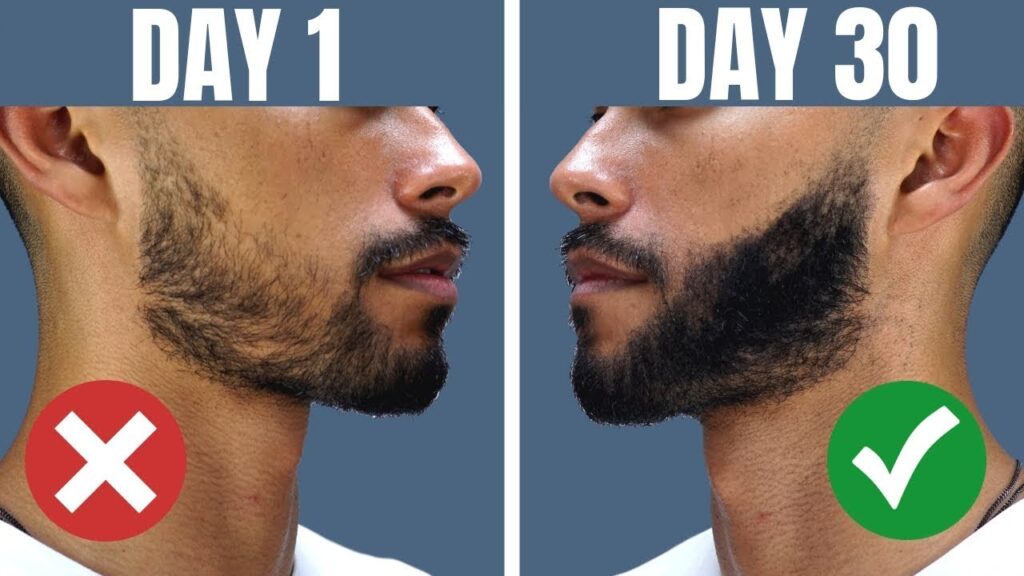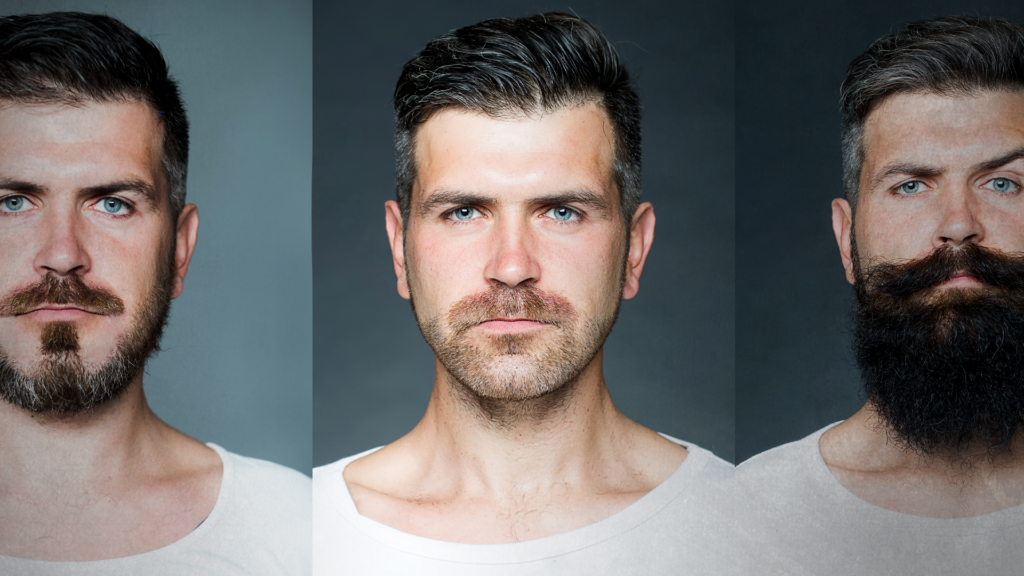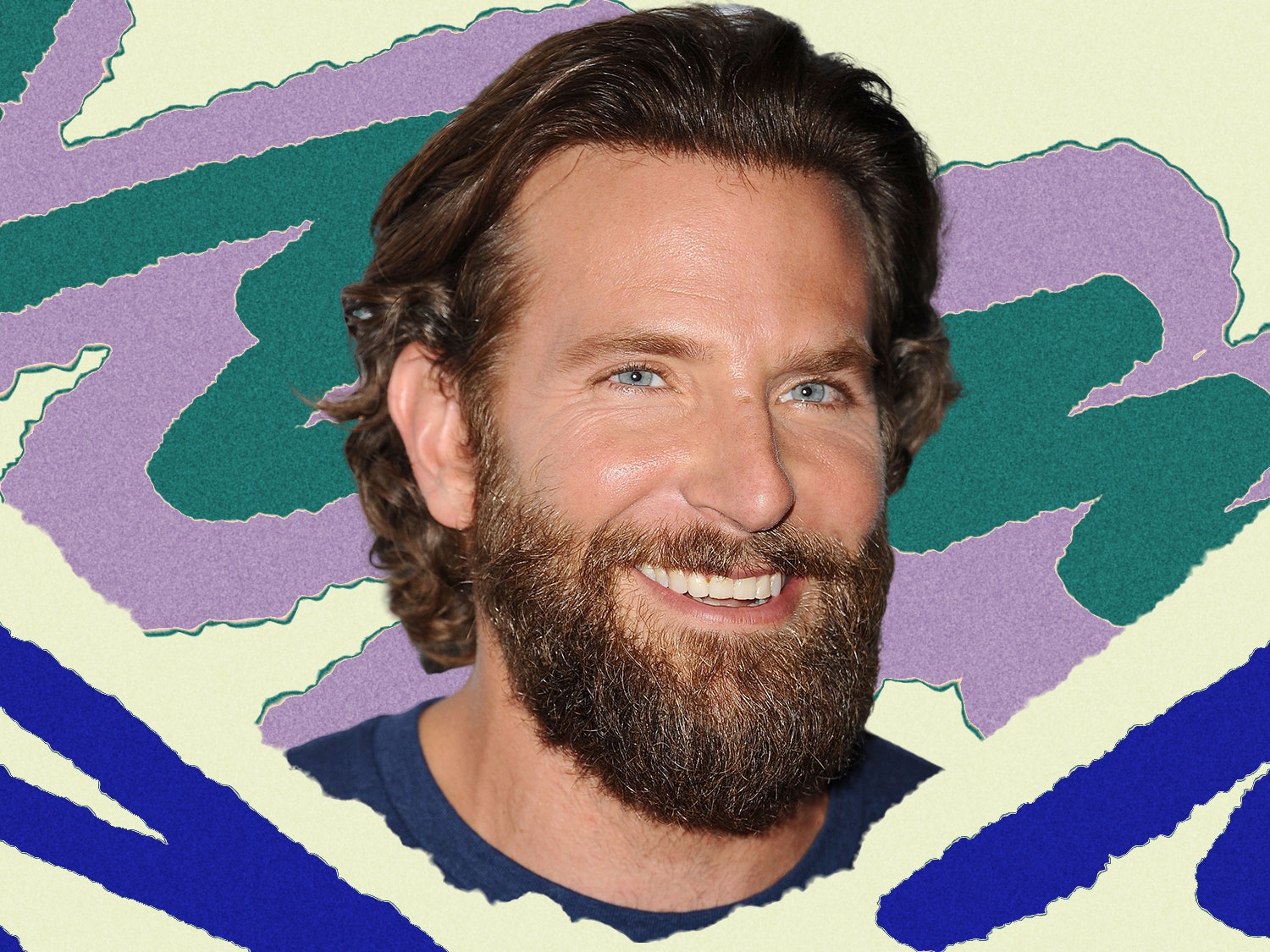Have you ever looked in the mirror and thought to yourself, “I want to grow a beard”? Maybe you’ve admired the thick, luxurious facial hair of others and wished you could have the same. Well, you’re not alone! Many individuals, both men and women, have expressed the desire to cultivate a magnificent beard. In this article, we will explore the reasons why people want to grow beards, the different styles to consider, and the essential steps to take in order to achieve that beard of your dreams. So, if you’re ready to embark on a beard-growing journey, keep reading!

Choosing to Grow a Beard
Personal reasons for growing a beard
Growing a beard is a personal decision that can be influenced by various factors. For some people, it may be a way to express their masculinity or personal style. Others may choose to grow a beard to cover up imperfections or scars on their face. Moreover, some individuals may simply find the idea of having facial hair appealing and want to change up their appearance.
Social and cultural influences
Social and cultural influences can also play a significant role in the decision to grow a beard. In certain cultures, a beard can represent wisdom, power, or religious beliefs. It can be a symbol of masculinity and maturity. Additionally, popular culture, celebrities, and trends may inspire individuals to grow a beard, as it can be seen as fashionable and trendy.
Benefits of growing a beard
Growing a beard not only transforms your physical appearance but can also offer various benefits. One major advantage is that it can enhance your self-confidence. A well-groomed beard can make you feel more attractive and distinguished, which can positively impact your self-esteem. Additionally, a beard can provide protection for your face against the elements, such as harsh weather conditions and harmful UV rays. It can also reduce the risk of skin allergies and irritation by acting as a natural barrier between your skin and external factors.
Understanding Beard Growth
Hair growth cycles
To understand beard growth, it’s essential to be familiar with the hair growth cycle. The hair growth cycle consists of three phases: anagen, catagen, and telogen. During the anagen phase, hair grows actively, while the catagen phase is a transitional period. The telogen phase is the resting phase when the hair follicles are dormant. Each hair follicle operates independently, which means different beard hairs are at different stages of the growth cycle at any given time.
Factors affecting beard growth
Several factors influence beard growth, including genetics, hormones, age, and overall health. Genetics play a significant role in determining your beard’s thickness, color, and growth pattern. Hormones, especially testosterone, also influence beard growth. As men age, their testosterone levels naturally decrease, which can affect beard growth. Additionally, general health and lifestyle factors, such as diet, stress levels, and exercise, can impact beard growth.
Common misconceptions
There are several misconceptions surrounding beard growth that need to be addressed. One common myth is that shaving more frequently will make your beard grow faster or thicker. In reality, shaving has no impact on the actual growth rate or thickness of your beard. Another misconception is that applying specific oils or products will miraculously promote beard growth. While certain products can improve beard health and appearance, they do not directly stimulate growth. It’s important to differentiate between healthy beard maintenance and actual growth stimulation.
Preparing for Beard Growth
Setting realistic expectations
Before embarking on your beard-growing journey, it’s crucial to set realistic expectations. Not all individuals have the same beard growth capabilities due to genetic factors. Some people may have thicker, fuller beards faster, while others may experience slower growth with patchiness. Understanding and accepting your unique beard growth potential will help you stay patient and committed throughout the process.
Choosing the right beard style
Once you’ve decided to grow a beard, it’s essential to choose the right beard style that complements your face shape and personal preference. Different beard styles, such as the full beard, goatee, or stubble, can create various looks. Experimenting with different styles can give you a better understanding of what suits you best. Additionally, considering your lifestyle, profession, and personal grooming habits is vital in selecting a manageable and practical beard style.
Consulting a dermatologist
If you have underlying skin conditions or concerns about beard growth, it’s advisable to consult a dermatologist. They can assess your skin’s health, address any potential issues, and provide personalized advice for maintaining a healthy beard. A dermatologist can also recommend specific grooming products or treatments if you encounter any challenges or experience adverse reactions during your beard growth journey.
Taking Care of Your Beard
Keeping your beard clean
Maintaining a clean beard is crucial for overall hygiene and appearance. Regularly washing your beard with a gentle beard shampoo or mild cleanser helps remove dirt, excess oils, and dead skin cells. It’s important to thoroughly rinse out any product buildup, as it can lead to itchiness or dandruff. Depending on your skin type and personal preferences, you may need to adjust the frequency of washing your beard, ranging from daily to every few days.
Moisturizing and conditioning
Proper moisturizing and conditioning are essential for a healthy and manageable beard. Beard oils, balms, or conditioners can provide much-needed hydration to both your facial hair and the underlying skin. These products help prevent dryness, brittleness, and split ends, making your beard appear softer, shinier, and more manageable. Applying moisturizers or oils after washing your beard, preferably when your beard is slightly damp, allows for better absorption and maximum benefit.
Trimming and shaping techniques
Regular trimming and shaping are necessary to maintain a well-groomed beard. Whether you prefer a shorter beard or a long, flowing one, trimming ensures an even length and helps manage patchiness. Investing in quality beard grooming tools, such as scissors or trimmers, is essential for achieving desired results. It’s important to follow proper techniques and take your time when trimming to avoid any mistakes or mismatched beard lengths.

Dealing with Beard-related Challenges
Itchiness and irritation
Itchiness and irritation are common challenges faced during the early stages of beard growth. As new hairs sprout, they can cause discomfort and itchiness, especially if the skin underneath is dry or sensitive. Regularly moisturizing your beard and the underlying skin can help alleviate these issues. Using a soft-bristled brush or comb can also help distribute natural oils and minimize irritation. If the itchiness persists or becomes severe, consulting a dermatologist is recommended to rule out any skin conditions or allergies.
Patchy beard growth
Patchy beard growth can be frustrating for many individuals. Sometimes, certain areas of the beard may have slower or thinner growth compared to others, resulting in an uneven appearance. While genetics primarily determine beard density, there are ways to maximize the potential for a fuller-looking beard. Allowing ample time for growth, proper grooming techniques, and maintaining a healthy lifestyle can help improve overall beard thickness and minimize the appearance of patchiness.
Grey or white hairs
As men age, it is common for beard hairs to develop grey or white coloration. Embracing these natural changes can add character and sophistication to your beard. However, if you prefer to maintain a more youthful appearance, various products, such as beard dyes or color enhancers, are available to temporarily or permanently alter your beard’s color. It’s essential to follow product instructions carefully and conduct a patch test if using new dye or colorant to avoid unfavorable reactions.
Promoting Beard Growth
Maintaining a healthy lifestyle
A healthy lifestyle plays a crucial role in promoting beard growth. Regular exercise helps boosts testosterone levels, which can positively influence beard growth. Additionally, managing stress, getting enough sleep, and avoiding excessive alcohol or tobacco consumption can contribute to better overall health, which in turn can impact beard growth. Practicing good hygiene, including regular face washing and exfoliation, can also promote a healthy environment for beard growth.
Eating a balanced diet
Eating a balanced diet rich in essential nutrients supports beard growth from within. Foods containing vitamins A, C, and E, as well as biotin and omega-3 fatty acids, are particularly beneficial for hair health. Incorporating fruits, vegetables, lean proteins, nuts, and seeds into your diet can provide the necessary nutrients for optimal beard growth. In some cases, dietary supplements or multivitamins specifically designed for promoting hair health may be recommended after consulting with a healthcare professional.
Using beard growth products
While beard growth products cannot magically make your beard grow faster, they can support healthy beard growth and maintenance. Beard growth serums, oils, or supplements often contain ingredients like biotin, vitamin E, and natural extracts that can nourish hair follicles and promote healthier, stronger beard growth. These products can be a useful addition to your beard care routine, but it’s important to choose reputable brands and consult a dermatologist if you have any concerns or specific needs.

Overcoming Common Beard Issues
Beard dandruff
Beard dandruff, also known as “beardruff,” is a common issue that occurs when the skin underneath the beard becomes dry and flakes off. Regularly washing and moisturizing your beard can help prevent or minimize dandruff. Using a beard-specific shampoo or cleanser formulated to balance the skin’s pH and moisturizing with beard oils or balms can significantly reduce flakiness. Gently exfoliating the skin underneath the beard with a soft brush can also help remove dead skin cells and prevent dandruff buildup.
Ingrown hairs
Ingrown hairs can be uncomfortable and unsightly. They occur when a hair curls back and grows into the skin, causing redness, inflammation, and potential infection. To prevent ingrown hairs, it’s crucial to maintain proper beard hygiene and grooming. Regularly exfoliating the skin can help remove dead skin cells that could clog hair follicles. Avoiding excessive shaving or trimming too closely can also reduce the chances of ingrown hairs. If you develop an ingrown hair, it’s advisable to let it heal naturally or seek medical advice if it becomes infected.
Avoiding breakouts
Beard-related breakouts commonly occur when hair follicles become clogged with dirt, dead skin cells, or excessive oil production. To minimize breakouts, it’s important to maintain a clean and well-groomed beard. Regularly washing your face and beard, as well as using gentle cleansers, help remove impurities. Avoid using harsh or comedogenic products that can clog the skin further. If breakouts persist or become severe, seeking advice from a dermatologist can help identify and address any underlying issues.
Maintaining Your Beard
Daily grooming routine
Establishing a daily grooming routine is essential for maintaining a healthy and presentable beard. This routine typically involves washing your beard with a gentle cleanser, followed by applying beard oils or balms for moisturization and conditioning. Regularly combing or brushing your beard helps distribute natural oils, reduce tangles, and maintain overall neatness. Trim stray or split ends as necessary to promote a well-maintained appearance. Tailoring your grooming routine based on personal preferences and hair type is crucial for optimal results.
Brushing and combing techniques
Using the right brushing and combing techniques is crucial for maintaining a well-groomed beard. For shorter beards, using a comb with fine teeth helps detangle and straighten the hair. For longer beards, a brush with natural bristles is more suitable for distributing oils and achieving a fuller appearance. When brushing or combing, start from the root and gently work your way through your beard to avoid hair breakage or excessive pulling. Regularly cleaning your brush or comb is important to prevent buildup and maintain hygiene.
Protecting your beard in harsh weather
Harsh weather conditions, such as cold winds or extreme heat, can take a toll on your beard. To protect your beard in such conditions, consider wearing a scarf or a beard balm that acts as a barrier against the elements. During hot weather, excessive sweating can lead to beard odor or irritation, so regularly washing and hydrating your beard becomes even more important. Applying a leave-in conditioner or using beard-specific sunscreen can also help protect your beard and the underlying skin from UV damage.

Styling and Experimenting
Trying different beard styles
Growing a beard provides an excellent opportunity to experiment with various beard styles and find the one that suits your face shape and personal style. Whether it’s a full beard, goatee, van dyke, or mustache, there are numerous options to explore. Experimenting with different styles also allows you to change your look to match different occasions or personal preferences. Consider looking at grooming guides or consulting a professional stylist for inspiration and recommendations based on your facial features.
Using beard accessories
Beard accessories can add personality and style to your beard while serving practical purposes. Beard combs or brushes with unique designs or materials can enhance your grooming routine and help achieve desired looks. Beard oils or balms often come in a variety of scents, allowing you to customize the fragrance of your beard. Additionally, beard jewelry, such as beads or rings, can add a touch of individuality and creativity to your beard style.
Seeking professional advice
If you’re unsure about the best grooming techniques or need expert advice, seeking professional help can be beneficial. Barbers or professional stylists with experience in beard grooming can provide personalized recommendations based on your specific needs and preferences. They can offer guidance on beard care, styling techniques, and product selection. Regular visits to a barber for professional trims or shaping can also help maintain a well-groomed beard and ensure it stays in top condition.
Beard Care for Different Hair Types
Straight hair
For individuals with straight hair, grooming and maintaining a beard are relatively straightforward. Regular brushing or combing helps distribute natural oils and prevents tangling. Trimming and shaping techniques can help maintain a neat appearance and minimize uneven growth. Proper moisturization and conditioning with suitable products designed for straight hair can keep the beard soft and manageable.
Curly hair
Curly hair requires special attention and care due to its unique texture and tendency to tangle. Using a wide-toothed comb or a beard brush with natural bristles can help detangle curly hair without causing damage. Applying moisturizing products, such as beard oils or curl-enhancing balms, helps keep curly beards hydrated, defined, and frizz-free. Regularly conditioning and deep conditioning treatments ensure the health and manageability of curly beards.
Coarse or thick hair
Coarse or thick hair often requires additional care to keep it under control and prevent unruliness. Regular trimming helps manage excessive hair length and promotes a well-kept appearance. Using heavier beard oils or balms with thicker consistencies can provide better moisturization and styling control for coarse or thick hair. Additionally, investing in a quality beard brush with stiff bristles helps distribute products effectively and keeps coarse or thick hair neat and tidy.
Growing a beard is a personal journey that offers a multitude of benefits. By understanding beard growth, preparing adequately, and adopting good beard care practices, you can maintain a healthy and attractive beard that reflects your unique style and personality. Whether you choose to grow a full, long beard or a shorter, more refined style, taking care of your beard will not only enhance your appearance but also boost your confidence and self-esteem. Embrace the adventure of growing a beard and enjoy the rewards it brings!

